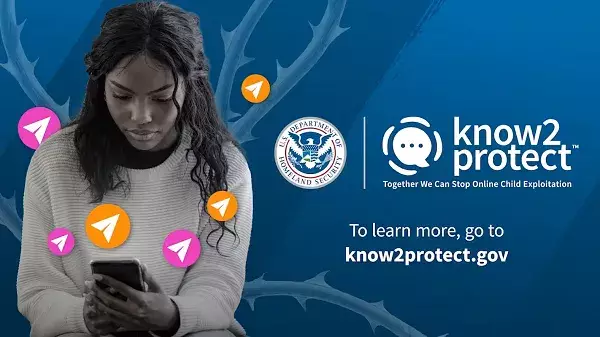In today’s hyper-connected world, the internet has transformed into an invaluable resource for communication and information sharing. Yet, this same digital landscape poses significant peril, particularly for our youth. Child sexual exploitation and abuse (CSEA) online represent one of the most pressing issues facing younger generations—a dark underbelly that lurks beneath the vibrant interfaces of social media. As major platforms like Snapchat take steps to address this alarming issue through initiatives such as the Know2Protect program, it is crucial to critically assess whether these efforts are making a tangible difference.
Launched in April of last year, Know2Protect aims not only to raise awareness about the dangers of CSEA but also to equip young users with the tools necessary to navigate these threats. The seriousness of the challenge cannot be overstated, as statistics highlight that 24% of teenagers still engage in sharing intimate imagery, indicating a troubling stagnation in prevention efforts. Such data encapsulate the broader narrative: awareness alone is insufficient without comprehensive measures that facilitate genuine understanding and safeguarding.
Policy Impact vs. Real-world Outcomes
Despite Snapchat’s commendable motivation to combat exploitation, the numbers reveal a grim reality. Even with the implementation of awareness campaigns, the reduction in reported grooming incidents and catfishing is marginal at best. A slight decrease in these occurrences may sound positive, but when you realize that 63% of teens who shared intimate material lost control over their content, it leaves much to be desired. This statistic signals an urgent need for a more profound and systemic shift in the way platforms address these issues.
What remains more concerning is the phenomenon of catfishing—34% of participants echoed experiences of being duped by falsified online identities. The increase in reported concerns about this issue suggests that mere educational content about online safety may not be enough. Young users need actionable strategies and consequences against those who exploit anonymity for malevolent purposes. The training programs or resources offered must evolve past passive notifications and into interactive frameworks that foster vigilance and report unsafe encounters with urgency.
Measuring Success: Awareness vs. Action
Snapchat’s recent undertaking to gauge awareness of the Know2Protect program indicates a slight win on the educational front, revealing that awareness has increased, with 28% of teens demonstrating familiarity with the campaign. However, awareness is only productive if it translates into action. While nearly 90% of surveyed respondents expressed a desire to learn more about online safety, this enthusiasm must lead to concrete behavioral changes. Educational initiatives need to be continuously monitored and adapted to ensure that they remain relevant to the changing online ecosystem and ever-evolving digital threats.
The disparity between awareness and actionable change serves as a clarion call for policymakers and tech companies alike. It should not be neglectful to view statistics in isolation; they must inspire collaborative efforts between educators and tech giants to not only inform but empower youth to take charge of their online safety. Programs should facilitate open discussions, community support, and avenues for reporting that are easily accessible and reassuring for young users in distress.
Technological Innovation Meets Social Responsibility
Snapchat’s implementation of tools like PhotoDNA, designed to identify and eliminate known illegal images and videos from its platform, is a step in the right direction. Integrating advanced technology with social responsibility could be the transformation needed to reverse these disheartening trends.
However, technology alone will not suffice. It is essential to pair such innovations with a culture of safety and trust, encouraging users to come forward without the fear of stigmatization. Implementation of in-app warnings regarding potential red flags and maintaining an evolving Family Center suite of parental controls are critical. Yet, the technology must be complemented with a strong emphasis on community engagement and fostering safe spaces for conversations about exploitation.
While Snapchat and the Know2Protect project are striving to address the online risks faced by teens, the task is monumental, and progress remains slow. Urgency and ongoing commitment are vital if society is to protect its most vulnerable and empower future generations to navigate the digital landscape safely.

